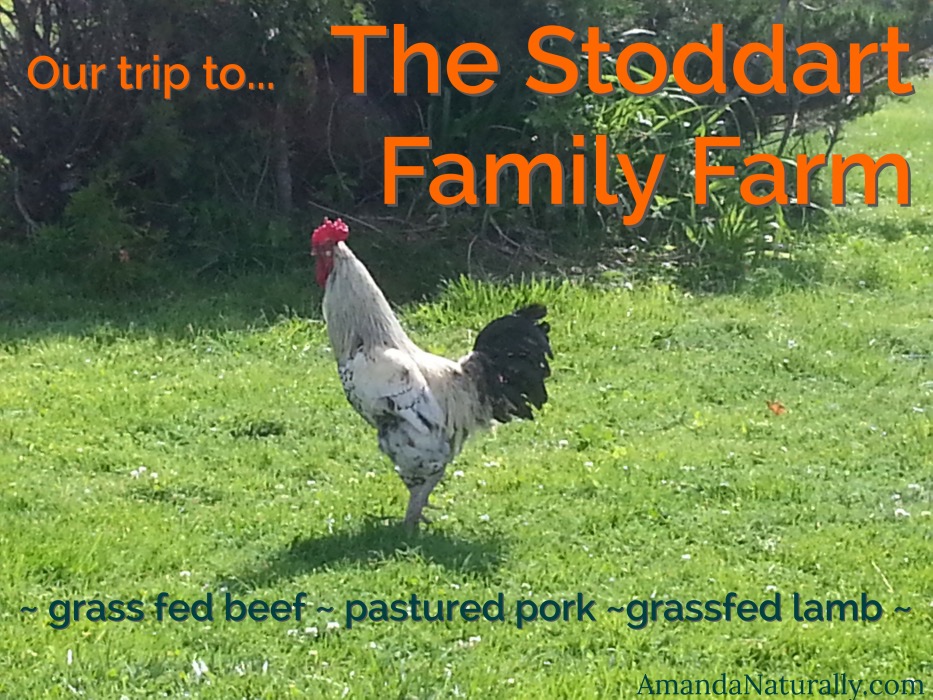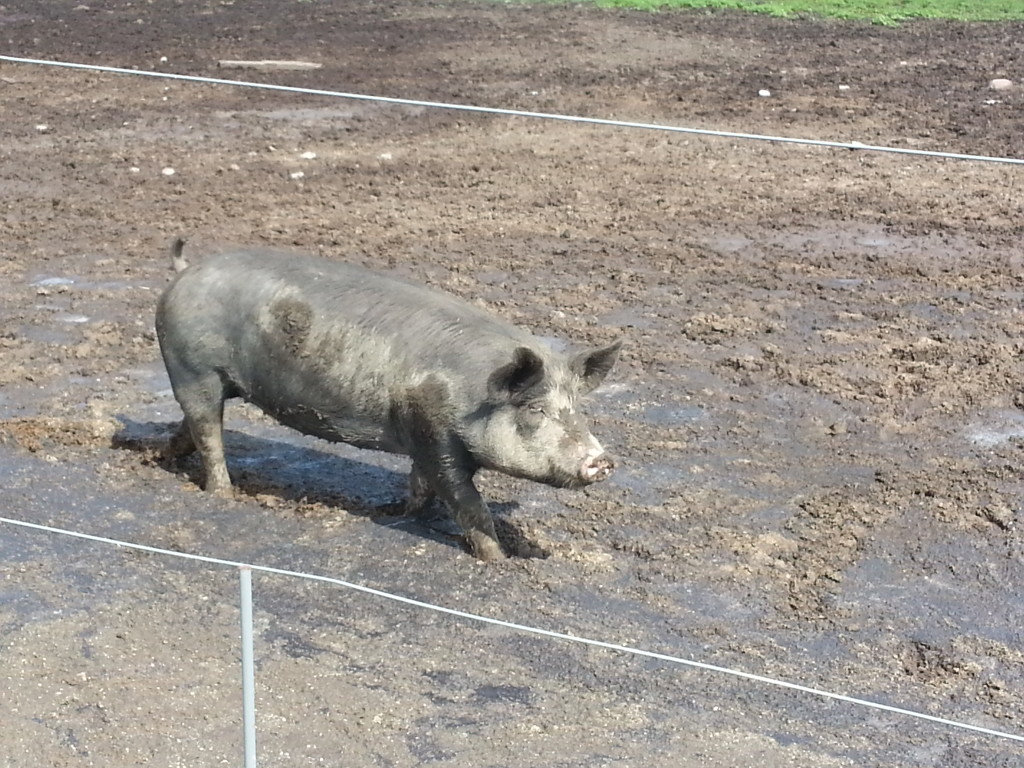Last Saturday was my husband’s birthday and the previous Tuesday was my birthday – so to celebrate, we spent Saturday afternoon at an open house at a local farm. Doesn’t everyone celebrate birthdays that way??

We have been on the hunt for a local farm that raises 100% grassfed beef and pastured pork, from which to buy a ¼, ½ or whole cow and a ½ or whole hog. Why you ask? Well for a few reasons.
- From a cost perspective, nothing compares. When you buy a ¼ cow, it ends up being $4.99/lb for all the different cuts. That means even the steaks are $4.99/lb!
- You can select the types of cuts you want and you will get all of the odds and ends, including back fat (for making tallow), bones and organs. (You don’t have to take these bits, but eating snout-to-tail is not only ethical, it’s delicious and incredibly healthy)
- It is important to us to support local farmers.
- We want to be connected with where we get our food from. It can be hard to “meet your meat” but we believe it’s an important part of the process. If you see the animals alive, you can’t help but be respectful and grateful for the life that was given, to allow you to live your life.
I can’t remember how I stumbled across these guys but oh boy am I glad I did. Harry and Silvia Stoddart from The Stoddart Family Farm are the real deal when it comes to raising animals properly. Two incredibly intelligent people – Harry worked in corporate finance and Silvia has a background in biochemistry – their passion for ethical meat production was inspiring.
Harry calls both Joel Salatin from Polyface Farm and Allan Savory of the Savory Institute his mentors and he has implemented many of their farming practices on his acreage. You might remember Joel Salatin from Food Inc. – he’s the farmer who always talks about allowing the pig to express its pigness! He has developed a rotational grazing system on his farm that not only encourages the health of both the animals and the pasture, but results in an exponential increase in profit per acre because it’s being used so strategically. He sums it up on his website in this creative and intriguing way:
For context, please understand that we don’t do anything conventionally. We haven’t bought a bag of chemical fertilizer in half a century, never planted a seed, own no plow or disk or silo—we call those bankruptcy tubes. We practice mob stocking herbivorous solar conversion lignified carbon sequestration fertilization with the cattle. The Eggmobiles follow them, mimicking egrets on the rhinos’ nose. The laying hens scratch through the dung, eat out the fly larvae, scatter the nutrients into the soil, and give thousands of dollars worth of eggs as a byproduct of pasture sanitation. Pastured broilers in floorless pasture schooners move every day to a fresh paddock salad bar. Pigs aerate compost and finish on acorns in forest glens. It’s all a symbiotic, multi-speciated synergistic relationship-dense production model that yields far more per acre than industrial models. And it’s all aromatically and aesthetically romantic.
Allan Savory is doing incredible work rehabilitating the earth in Zimbabwe. About two thirds of the earth is not arable – so it cannot be used for growing crops. When we try to play God and manipulate the earth to grow crops on such land, it is an incredible drain on resources such as water, it causes more damage to the earth because fertilizers are heavily relied upon and it exacerbates drought and nutrient-deficient soils because no animals are there to return the nutrients to the soil. According to the Savory Institue:
For centuries we believed livestock were a major cause of desertification, but Savory’s research showed that the cause lay in how those livestock were managed. His solution involved mimicking the behavior of the formerly vast herds of wild grazing animals he had witnessed as a young biologist. He devised a simple method any pastoralist can use to move massive amounts of carbon and water from the atmosphere back to the soil and begin reversing thousands of years of human-caused desertification – on the scale required, which no technology imaginable can accomplish. In the process, we can feed more people and enhance societal well-being.
Both Salatin and Savory are going against the grain – literally. They are combining the wisdom of our ancestors who had to live in rhythm with the earth, with advances in technology to feed the world and rehabilitate the earth at the same time.
According to Harry, there are 3 pillars of raising animals for consumption:
- It must be healthy for the animal.
- It must be healthy for the human who will consume it.
- It must be healthy for the environment.
Every decision they make at Stoddart Family Farm has to be consistent with all 3 pillars and because of this, they raise incredibly healthy animals whose nutritional quality is unparalleled, and their pasture is a lush and diverse ecosystem full of frogs (a major indicator of pasture health), bugs and a variety of plant matter.
Last Saturday they had an open house, and we happened to be around, so we drove the 45 minutes northeast of Whitby to the far side of Lake Scugog. Boy we were in for a treat! Harry took us on a tour all over the farm, including out to all the pastures. It was a beautiful day, we were out there for over an hour, and we loved every second of it! Here are some photos I snapped that day – bear with me, they are taken on my phone.















As we left, we felt incredibly inspired and grateful. We have our very own version of Polyface Farm at Stoddart Family Farm. That night we cooked up some of the most delicious burgers we’ve had in a long time, with ground beef purchased from the farm. We immediately put in an order for an entire cow and pig – which we will be sharing with my parents and some of our close friends. And while I can’t vouch for the pork yet, if the beef was any indicator, we are in for a treat.
If you are currently purchasing grassfed or organic meat at a local butcher, and are finding it tough on your budget, I strongly recommend looking into Stoddart Family Farm. At $4.99/lb you are getting an incredible deal on the highest quality product possible. And most importantly, you will be supporting a small, local farm, whose primary goal is health – of the animal, the consumer and the earth.
